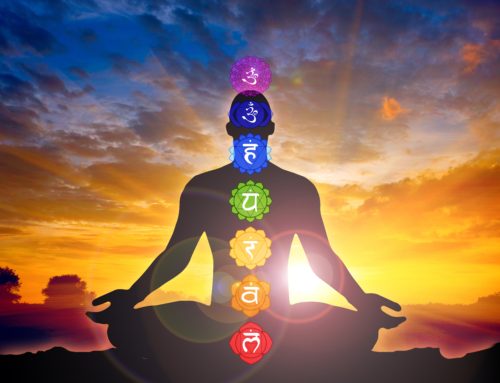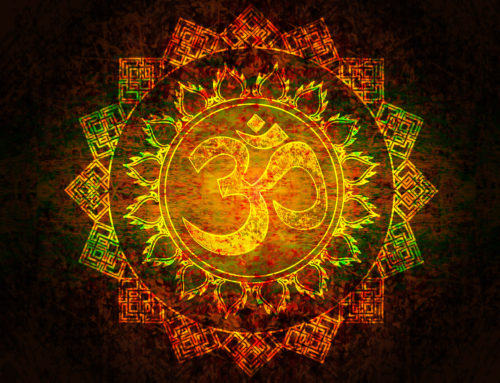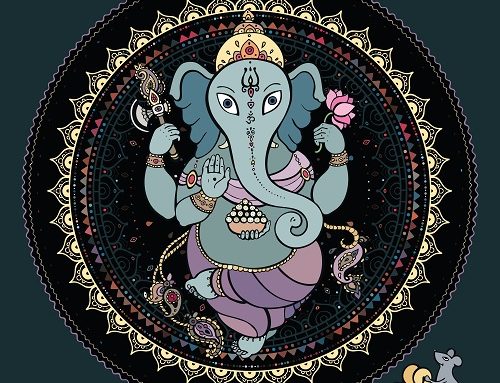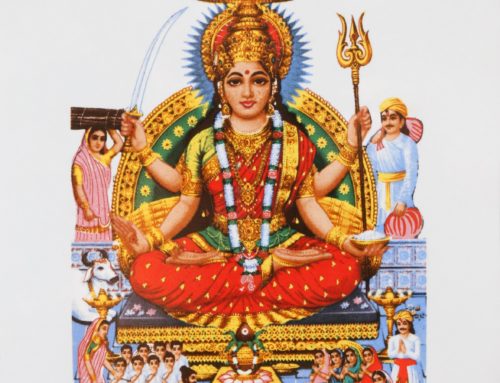Astrology has more or less been divided into three regions; western, eastern and oriental. Western astrology refers to the tropical zodiac systems very prevalent in Europe and the Americas, Eastern astrology pretty much just refers to Indian or Vedic astrology, and Oriental astrology is that system practiced in China, Tibet and Mongolia that utilizes a 60-year cycle of time instead of astronomical calculations. Each of these have their own value. The oriental systems help us understand the cycles of the Earth and how energy transforms during the years and seasons, while vedic astrology gives excellent predictions and karmic insight and western astrology is very good at character analysis. Each system of astrology can of course perform the functions of the others but this is my opinion as to where each excels.
Western astrology uses a tropical zodiac, which is the same as saying that it uses a “seasonal” zodiac whereas jyotish uses a sidereal or “starry” zodiac. This is perhaps the most important distinction between the two systems. In the tropical zodiac the beginning of Aries, the first zodiac sign, is marked at the moment of the spring equinox. Hence by “Aries” a tropical astrologer actually means first month of spring, by “Cancer” he means Summer, and thus Libra will be Autumn and Capricorn will be the beginning of Winter, and hence the zodiac is based on the seasons. Due to an astronomical occurence called the precession of the equinox, the first day of spring happens a little earlier in the celestial sky each year. In other words there was once a time, around 2000 years ago, wherein the Sun was at the beginning of the actual constellation of Aries (sidereal) and the first day of spring (tropical) at the same time, but due to the precession of the equinox the Sun is a little further backwards in the actual constellations each equinox. Hence now the Sun is actually in the first 10 degrees of Pisces, having moved more than 20 degrees backwards from the beginning of Aries over the last 2000 some-odd years on the first day of spring. This difference between where the Sun actually is in the sidereal zodiac (being the actual constellations in the sky) and where 0 degrees Aries is placed in the tropical zodiac on the first day of spring is called the “ayanamsa” in jyotish. Because of the ayanamsa it is very common for all of your planets in a vedic astrological chart to be one zodiac behind their placement in the western tropical chart because the sun is about 1 zodiac behind 0 degrees aries on the spring equinox. Hence if you are a Scorpio Sun in western astrology then you are probably a Libra Sun in vedic astrology. Since the Sun is used in a VERY different way by jyotish astrologers than western astrologers this difference doesn’t change the reading much.
Explaining Discrepancies
Now if all of the planets are in a different zodiac in a western and vedic chart, then how can two different charts still give accurate results!? This is a question that many jyotishikas get asked by clients who are use to the western method, and in fact I haven’t seen any good explanations of it in any books available today so I will give my own reasoning, which I think is fairly sound. First we should distinguish the use of each system, by which I mean the function which each system best serves. Western astrology is very good at its ability to help us understand ourselves psychologically and emotionally. Many western astrologers will talk about our hopes, desires, emotional states, and possible ways to transform and grow as a person. In my own experience of studying western astrology for years before being introduced to jyotish, I found that western astrology is very good at pinpointing how we will react to something but not necessarily what that something is. If we see that someone is going to be experiencing a lot of grief and turmoil in the future then we can reasonably predict they will probably lose a loved one or suffer some kind of tragedy. Thus the tropical chart can at least predict with some accuracy future events and can delineate with great accuracy personal details of our character. This is by no means all that it is confined to, but it is where I have always seen it excel. Jyotish on the other hand is not so focused on how we will react but rather on what we are reacting to. Hence where a western astrologer may predict grief in the future, a jyotishika is much more likely to predict the cause of the grief such as loss of a loved one and be able to delineate exactly which loved one will be lost and why. In other words it appears that the western school is very good at dealing with our subjective reality and feelings while jyotish excels at dealing with the actual events and karmas objectively, regardless of how we will personally react to them. Hence it is common for many westerners to find a jyotish reading to be rather impersonal and cold in its dispensation of raw facts and events.
Having given my ideas as to the differences between the two systems and how they tend to be approached, I will now try to illuminate how this comes into play for explaining the differences between the tropical and sidereal signs. The tropical zodiac is seasonal and thus relies completely on the Sun. The seasons caused by the Sun on our planet only effect our planet, and in a way of speaking can be likened to the personality of the planet itself. Thus the same zodiac which effects the personality/seasons of the planet likewise effects the personality of us according to the traditional teaching that we are a microcosm of a larger macrocosm. However the stars could care less what season it is and remain fixed, and since the light of the stars is the harbinger of our karma the sidereal zodiac is specifically karmic and deals with actions and events that are going to happen regardless of what we think or feel about them. Thus even though in a western chart the Sun in Sagittarius (aka the energies of the 3rd month of Autumn) may lead to a happy, friendly and benevolent if not mischievous kind of person, in the sidereal chart the Sun in Scorpio could give a military father, sharp features to the body, some health issues, etc… depending on the aspects affecting it. Which leads us to our next subject; the use of the Sun and “Sun signs” to determine character traits.
Sun Signs vs. Moon Signs (West vs. East)
The use of the Sun sign system and its emphasis in the West is much more like the calendrical-based astrology of China than it is jyotish. When a person says “I am a Leo sun sign”, what they really mean is “I was born in the second month of Summer”. Hence it is not Leo that is giving them the traits of the so-called Sun-sign, but it is actually just the energy of the season. And if someone were to say that the zodiac is what gives the energy to the season, well that’s quite nonsensical too since then Spring should be the hottest and Summer one of the coldest seasons! For Aries would certainly give a hotter summer than Leo, and Cancer a cooler winter than Capricorn! So the names of the zodiacs are being used simply as place-holders in the western system, and we should actually understand that the mechanism of sun-signs is the energetic effect that the particular season has upon all those who are born in it. In fact many western astrologers would benefit from studying the Chinese calendrical system to better understand the subtle variations of the seasons and how they effect us. Thus we should understand that those born in spring will be more boisterous generally than those born in fall, and those born in summer more physical and extroverted than those born in Winter. Jyotish actually has a similar system in place, and many astrological texts give long lists of attributes for being born in the different seasonal months, days and ever hours! It also has a 60 year cycle similar to the Chinese calendar that likewise has various traits assigned to each year.
In Jyotish the most commonly used tool for understanding the psyche of a person is the Moon, which is said to be the karaka (indicator) of the Mind. Instead of relying too much on the zodiac signs for analyses the nakshatras or lunar mansions are used. These are 27 equal segments of the sky divided according to certain star clusters that the moon moves through (see my article “Basics of Astrology”). Each of them give a distinct effect on the personality primarily, and then the moon receives the influence from the zodiac sign it is in secondarily and then any other aspects it may be receiving thirdly. Thus a person born in Krittika nakshatra may be a natural leader but be a slave to his or her desires and perhaps even abuse power, especially being in the Taurus part of the nakshatra wherein material desires become much stronger. If however a well placed Jupiter aspects then a special combination occurs called Gajakeshari yoga and the result is a benevolent leader who innovates in his/her field. If Mars were to aspect the Moon alongside this favorably then a good Chandra-Mangala yoga would form giving the native the energy to succeed in the missions they set out to do and they will always being trying to manifest their lofty ideas (Jupiter) into the world (Taurus). In such a way with other considerations taken into account a learned astrologer will determine personality in a very accurate and scientific way and be able to deduce not just the personality but also some major life events.
Planetary Aspects
Both vedic and western astrology utilize a system of aspects called “graha drishti” in jyotish and planetary aspects in western terminology. Traditionally the vedic method is not as exact or worried about orbs of influence or degrees whereas the western schools consider aspects according to exact degrees. Also in vedic astrology aspects are not generally considered as “good” or “bad”. A good aspect is an aspect from a good planet, a bad one is from a bad planet. The various kinds of aspects simply determine what percentage of influence one planet has over another. In Western astrology however there is a very sophisticated system of planetary aspects which I feel could benefit any astrologer to learn and master. Here not only do the exact degrees take precedence in determining results, but some aspects are considered to be helpful such as trines and sextile aspects, whereas others are said to be obstructive such as squares or oppositions. I do think that some vedic knowledge can contribute to this, such as the knowledge that Mars gives full aspect in squares whereas Jupiter gives full in trines, etc… but ultimately I have always found very good results especially in determining psyche with this method. Each planet is taken to be a karaka or indicator of a different part of our psyche and the resulting aspects indicate how those parts of us function. The nice thing about such an aspect-emphasized system is that the aspects will be exactly the same in both a sidereal and tropical chart because it is only the signs that rotate, not the distance of the planets. Thus the planets remain the same number of degrees away from each other and will accordingly give the same results in either system. There is a growing school of contemporary vedic astrologers who are beginning to see the wisdom in the Western teachings on aspects which probably began with the K.P system of Jyotish earlier in the 20th century.
Prediction
Prediction is where Jyotish stands alone above and beyond other schools of astrology. This does not mean that jyotishikas will give more accurate predictions, it simply means that the tools available for a jyotishika to use are much more vast and scientific than other schools of astrology, which will then make it easier to render accurate predictions with consistency. This is after all the crux of all astrology. If astrologers could only read the past then it would be nothing but a contrived series of hind-sights. Thus actual predictions are the means by which all astrologers must actually be weighted and determined competent or novice, truthful or fraudulent. Jyotishikas have at their disposal so many predictive models that it is truly overwhelming to try to master even a few of them. There are the transits, which it shares with its Western friends, but even then there is a complex mathematical model called ashtakavarga to render the transits into a series of scores assigned to each sign for each planet to determine how well or bad it will perform in each sign during its transits. Then there is the complex model of dashas, the theory of planetary periods and zodiacal periods that will rule various years of our life at a time depending on when we were born. There are progressions of the ascendant as well as yearly charts (called varshaphala) to predict events in shorter and closer time frames, or life-long dashas such as the vimsottari dasha that give a portrait of the entire life of the native. There are some dashas just to predict obstacles, others to predict disease and death, others to predict success and wealth. There are nadi protocols that help us understand at which year exactly in our lives a certain planet will activate and give results, and there are various techniques for predicting longevity, marriage, children, etc. Then we have a sophisticated system of prasna or horary astrology which we also share in common with our western counterparts. And perhaps the best ting about all of this is that many of these techniques were handed down to us by various rishis and realized masters whose authority acts as a sacred seal of approval upon the methods themselves.
Conclusion
It is not my intent to belittle any other school, but it is my intent to show my readers why, after having studied western astrology for some years, I had my first vedic reading and then decided to dedicate my studies to it from that point onwards. Western astrology isn’t wrong by any means, but it is young. Many of the texts on it have only come from the last century or two, and thus the innovators in the field have had to work hard to flesh out a fairly simple system. On the other hand jyotish is even by more modern scholastic standards at least 1000 years old, and realistically it is probably much older. There are hundreds of sacred texts going back at least a thousand years and some are considered much more ancient, and these are filled with invaluable tools to increase the accuracy of a jyotishika and thus render him/her more capable of helping people with the science. It is serious business. It was used to help counsel kings and navigate the course of countries. Such is its nobility, and should it be found wanting then it is only the jyotishika who has failed the system and not the system that has failed the jyotishika.





